The knee joint comprises the bones and muscles, tendons and ligaments and other components that make up the joint structure. It is the most complex - and the largest - joint in the body. It is also susceptible to damage since it is subject to high levels of physical stress, especially from sports activity, with around 2.5 million sports-related knee injuries in Australia every year.
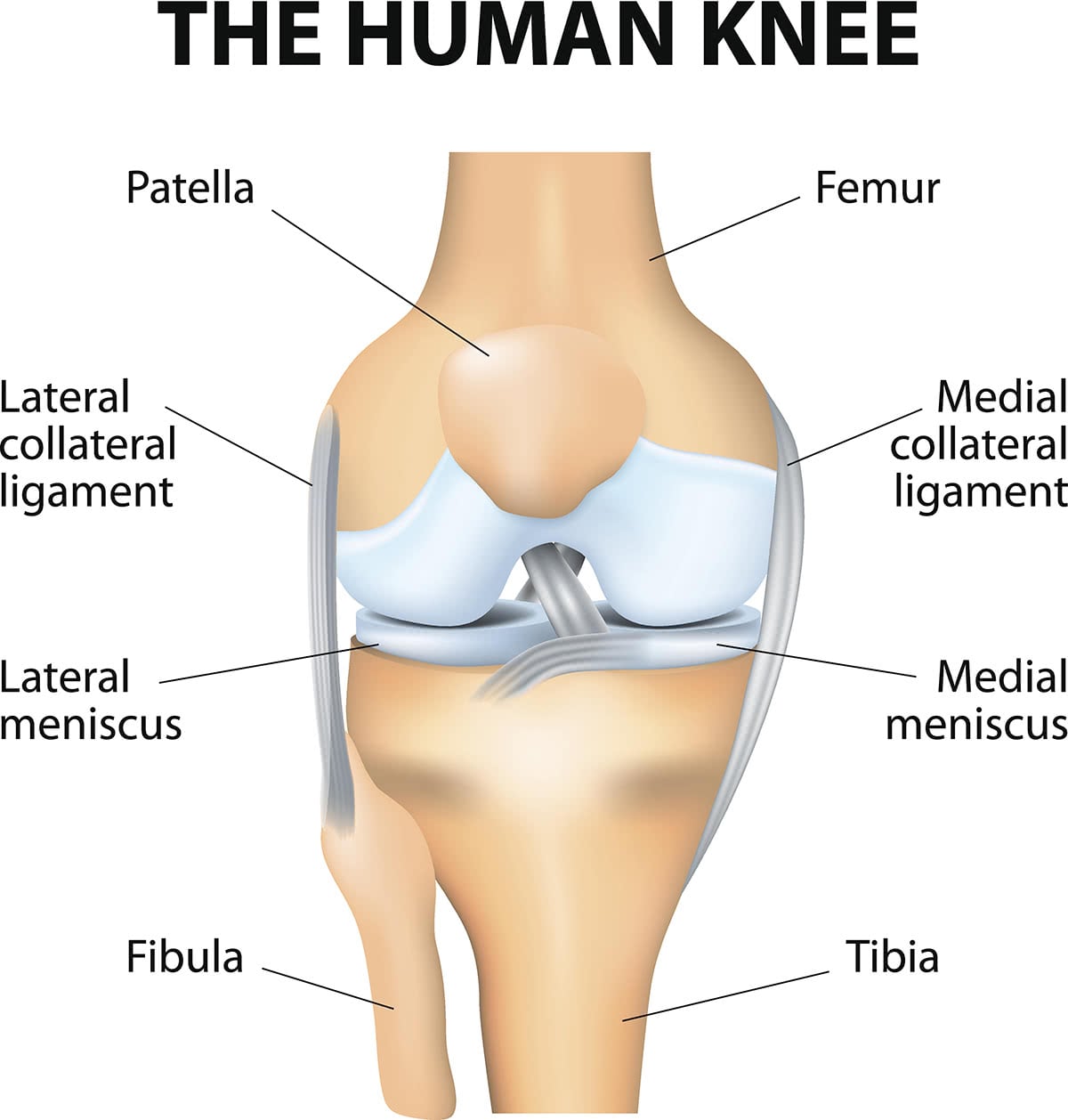
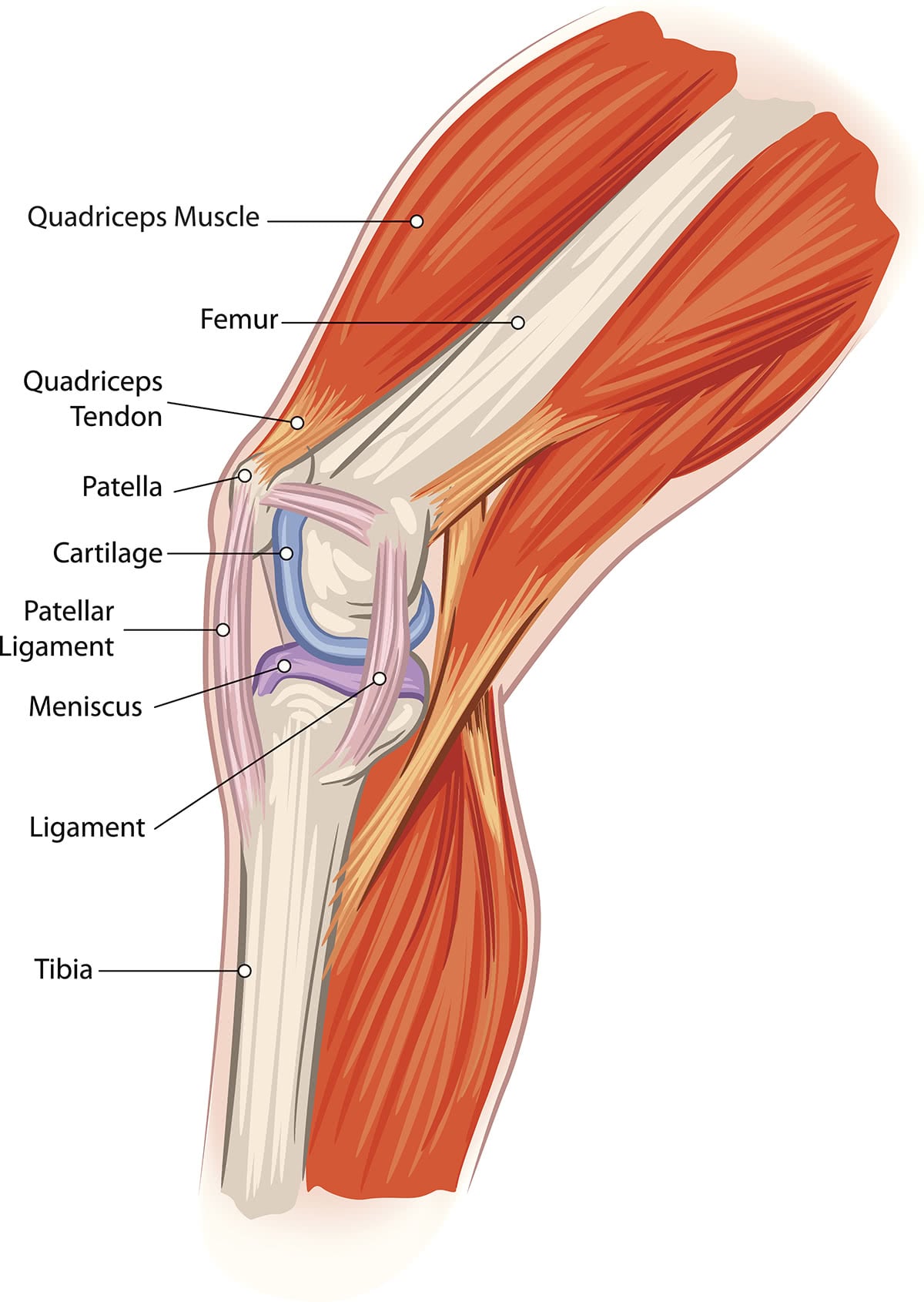
The main functions of the knee joint are...
- Stability and efficient use of muscles when standing still and when moving.
- To lower and raise the body.
- To act as a 'shock absorber' when walking or running.
- To allow the leg to twist.
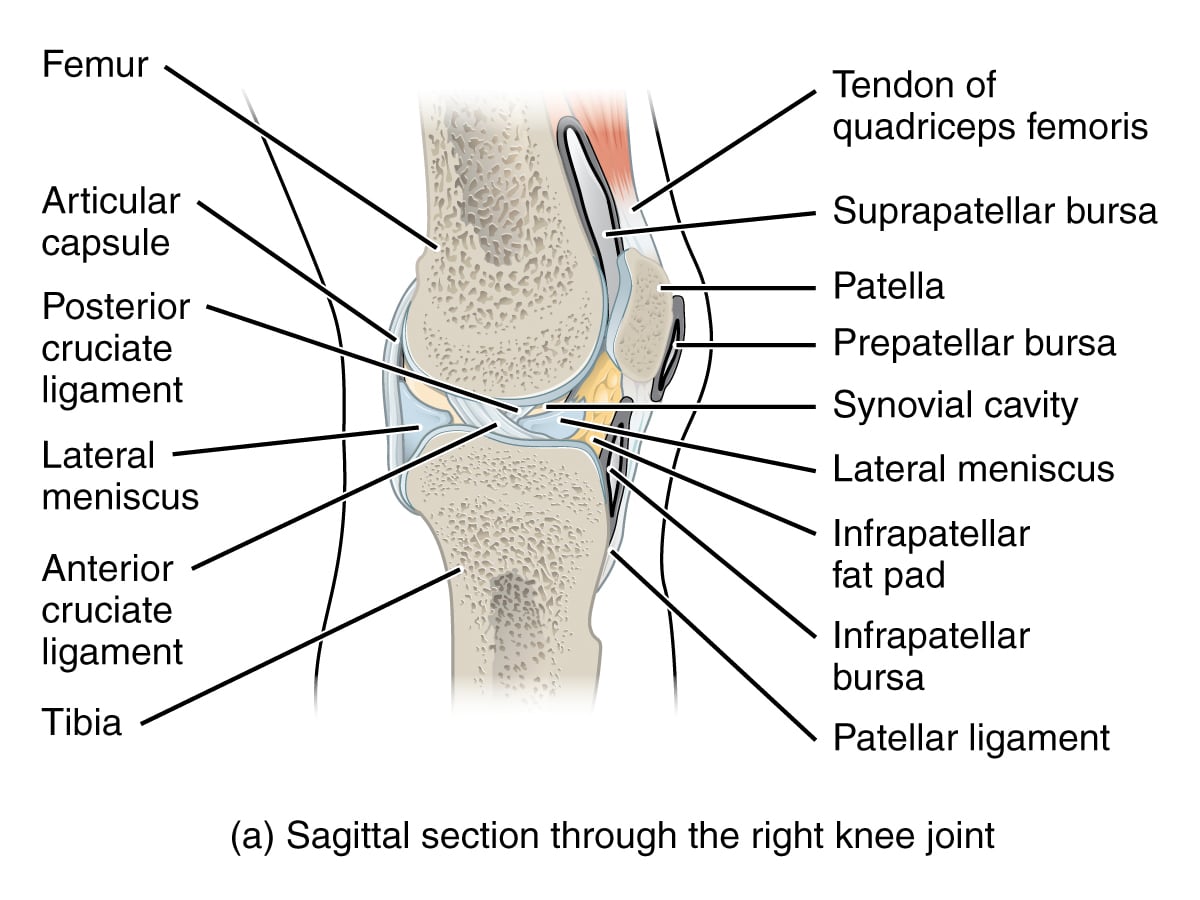
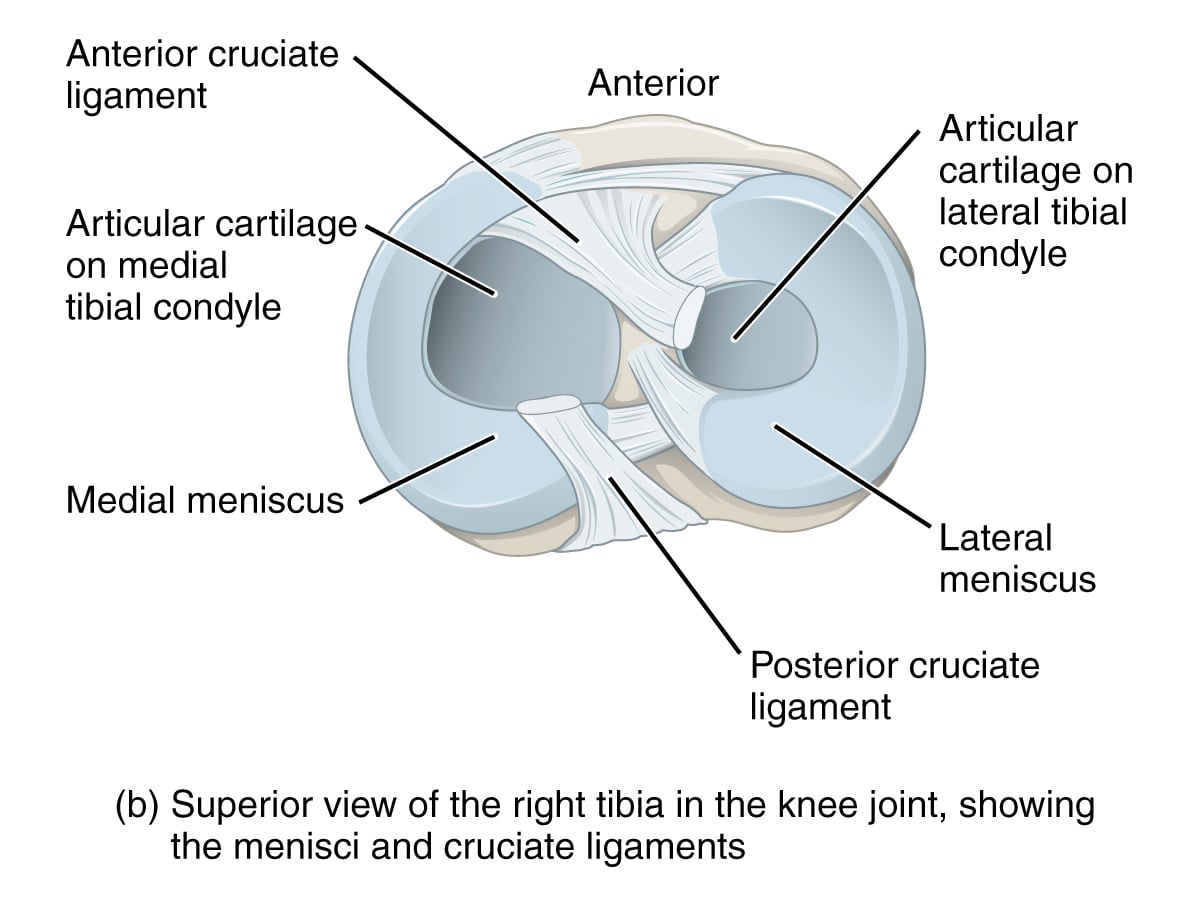
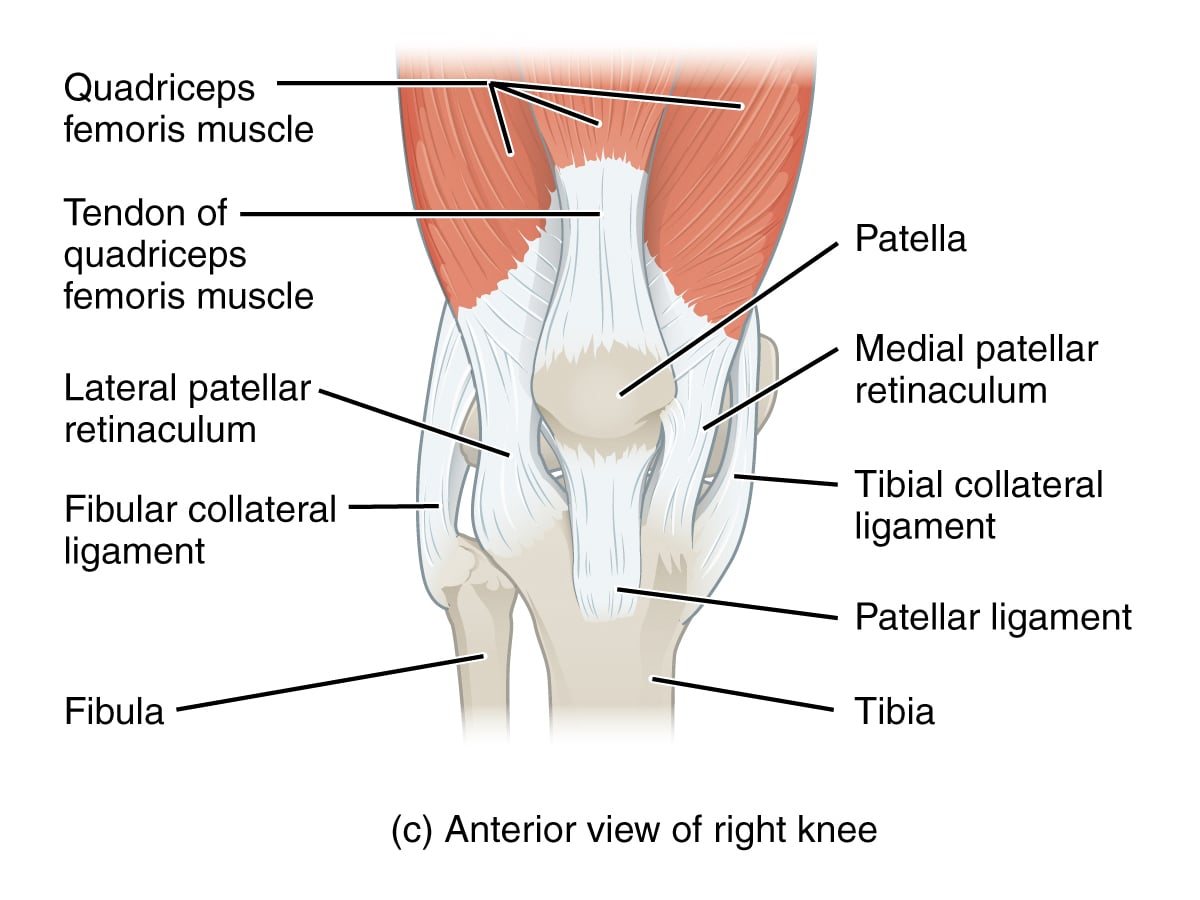
The Knee Bones
The knee joint is made up of four bone components...
- The femur – the thigh bone above the knee.
- The tibia – the shin bone below the knee.
- The fibula – the 'calf bone', a smaller bone that sits to the side of (and runs alongside) the tibia..
- The patella – the kneecap. located within the quadriceps muscle.
The Muscles, Tendons and Ligaments
Muscles
The main muscles involved in the operation of the knee joint are the hamstrings, a group of muscles to the rear of the upper thigh; the quadriceps, a group of four muscles to the front of the thigh, and the gluteus medius and gluteus minimus in the buttocks. The quadriceps act to straighten the knee, the hamstrings bend the knee and the gluteal muscles help position the knee.
Tendons
Tendons are connective tissue that connect muscles to bones and in the knee joint they provide stability. The main tendon the affects the knee joint is the patellar tendon which is attached to the quadriceps and runs down the thigh to the kneecap.
Ligaments
Ligaments are similar to tendons but instead connect bones together to keep a joint stable. There are four in the knee joint...
The Anterior Cruciate Ligament (ACL)
This ligament stops the thighbone (femur) sliding rearward over the shinbone (tibia) and stops the shinbone sliding forward in relation to the thighbone.
The Posterior Cruciate Ligament (PCL)
This ligament stops the thighbone (femur) sliding forward over the shinbone (tibia) and stops the shinbone sliding rearward in relation to the thighbone.
The Lateral Collateral Ligament (LCL)
This ligament stops any side-to-side motion of the thighbone (femur).
The Medial Collateral Ligament (MCL)
This ligament performs the same action as the LCL.
Other Knee Components
Bursae
These are small fluid filled sacs (singular: bursa) which act as a form of cushion where the muscles, bones and tendons in the knee area may rub against each other. There are around fourteen of these in the knee area. When these become inflamed or damaged this can cause pain, known as 'bursitis'.
Cartilage
There are in fact two types of cartilage present in the knee joint...
Menisci (singular: meniscus)
These perform the function of shock absorbers in the joint, as well as having nerves that guide balance and stability and determine distribution of weight bearing between the thighbone and the shinbone. They are roughly crescent shaped, with each knee having two - a medial meniscus to the inside of the knee (this is the larger meniscus) and a lateral meniscus located on the outer side.
Articular Cartilage
This cartilage also acts as a form of shock absorber and in addition allows the bones in the knee joint to move smoothly together.
The joint itself is contained within a structure known as the 'joint capsule' or 'synovial membrane' - this is located around the entire joint and contains 'synovial fluid' which acts as a kind of lubricant for the joint.
Related Information
Knee Arthroscopy
Oxford Partial Knee Replacement
Total Knee Replacement (TKR)
Common Knee Injuries
Meniscus Tears
